THEY LIVE: Class Warfare On An Intergalactic Scale
Of all the filmmakers who came to prominence during that golden late '70s/early '80s era of genre filmmaking, John Carpenter was the chameleon of the pack. He was comfortable at tackling different genres like his directing hero Howard Hawks, confidently passing back and forth between horror, sci-fi and action. For the most part, his work was not personal in the way the films of contemporaries like George Romero or David Cronenberg were. He was more interested "delivering the goods" than delivering a message.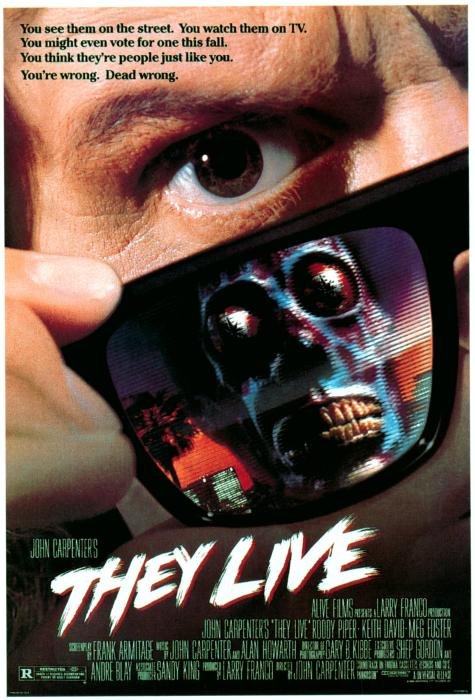 Those aforementioned qualities of his work make They Live a fascinating anomaly in the Carpenter filmography. The dry humor, the action and the genre elements are all there... but they are all focused around communicating a very direct and explicit social message that you rarely see in his films. It was a departure worth taking because They Live is one of Carpenter's finest films.The premise basically uses the "alien invasion" plot archetype as a vehicle for a critique of late '80s American society. Its oft-battered hero is John Nada (Roddy Piper), a homeless man who comes to Los Angeles in search of work. While living in a shantytown, he discovers some sort of street-level conspiracy involving the secret production of sunglasses. Before he can figure it out, cops violently roust the shantytown under mysterious pretences.John escapes the raid and gets his hands on one of those sets of sunglasses. When he puts them on, he discovers something he couldn't have dreamed of: they allow him to see that the city is full of aliens who disguise themselves as
Those aforementioned qualities of his work make They Live a fascinating anomaly in the Carpenter filmography. The dry humor, the action and the genre elements are all there... but they are all focused around communicating a very direct and explicit social message that you rarely see in his films. It was a departure worth taking because They Live is one of Carpenter's finest films.The premise basically uses the "alien invasion" plot archetype as a vehicle for a critique of late '80s American society. Its oft-battered hero is John Nada (Roddy Piper), a homeless man who comes to Los Angeles in search of work. While living in a shantytown, he discovers some sort of street-level conspiracy involving the secret production of sunglasses. Before he can figure it out, cops violently roust the shantytown under mysterious pretences.John escapes the raid and gets his hands on one of those sets of sunglasses. When he puts them on, he discovers something he couldn't have dreamed of: they allow him to see that the city is full of aliens who disguise themselves as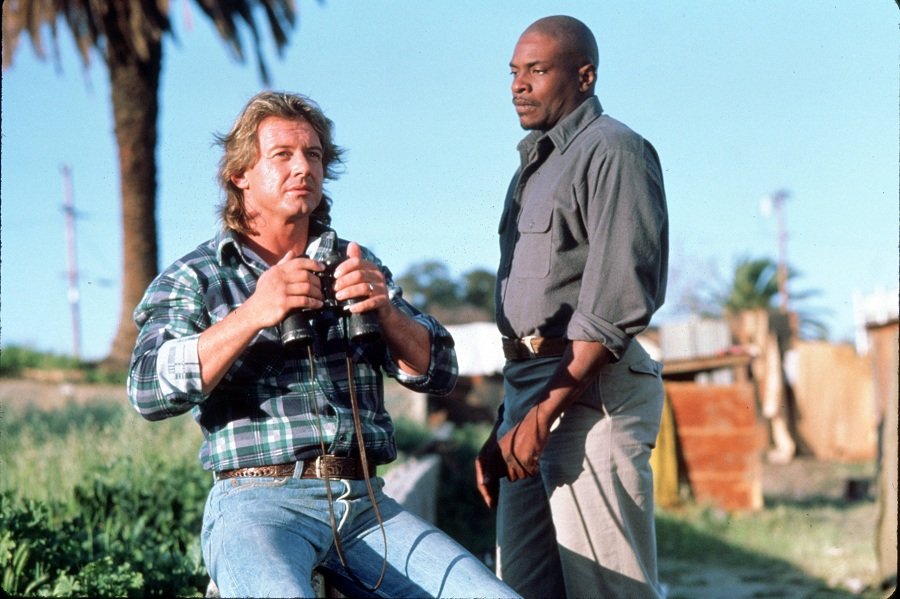 humans. Even worse, they hypnotize the unwitting human sheep around them through a variety of hidden messages in print form ("Obey," "Consume," etc.). John decides to fight back and quickly discovers that human nature is as big a foe as his alien enemies.The end result is very popular with cult movie audiences and with good reason. They Live is a very confident and skillfully calibrated blend of sci-fi with action and thriller elements, utilizing a unique variation on traditional three act structure in which each act gets its own full half hour. The first act is almost like a Twilight Zone episode that sets up the concept in a slow-burn style. This is followed by a second act that exposes us to the conspiracy through the hero's eyes and closes with a dynamic third act that really shows the full extent of the alien invasion while paying o
humans. Even worse, they hypnotize the unwitting human sheep around them through a variety of hidden messages in print form ("Obey," "Consume," etc.). John decides to fight back and quickly discovers that human nature is as big a foe as his alien enemies.The end result is very popular with cult movie audiences and with good reason. They Live is a very confident and skillfully calibrated blend of sci-fi with action and thriller elements, utilizing a unique variation on traditional three act structure in which each act gets its own full half hour. The first act is almost like a Twilight Zone episode that sets up the concept in a slow-burn style. This is followed by a second act that exposes us to the conspiracy through the hero's eyes and closes with a dynamic third act that really shows the full extent of the alien invasion while paying o ff the story with plenty of excitement. Better yet, the switch between these acts totally upends what the viewer is expecting from the plot and pushes things in a new, surprising direction each time.The demanding, tricky structure works beautifully thanks to Carpenter's populist, straightforward approach to genre filmmaking. He grounds his sci-fi concepts in a believable, down-to-earth setting and builds the story around an everyman hero. He also layers the story's twists and turns with plenty of action. The film is full of inspired action and chase setpieces, all directed with a craftsman's attention to detail: the raid on the shantytown is particularly impressive in this respect, using simple visual concepts to anchor a scene with complex action and a large number of cast members.Carpenter als
ff the story with plenty of excitement. Better yet, the switch between these acts totally upends what the viewer is expecting from the plot and pushes things in a new, surprising direction each time.The demanding, tricky structure works beautifully thanks to Carpenter's populist, straightforward approach to genre filmmaking. He grounds his sci-fi concepts in a believable, down-to-earth setting and builds the story around an everyman hero. He also layers the story's twists and turns with plenty of action. The film is full of inspired action and chase setpieces, all directed with a craftsman's attention to detail: the raid on the shantytown is particularly impressive in this respect, using simple visual concepts to anchor a scene with complex action and a large number of cast members.Carpenter als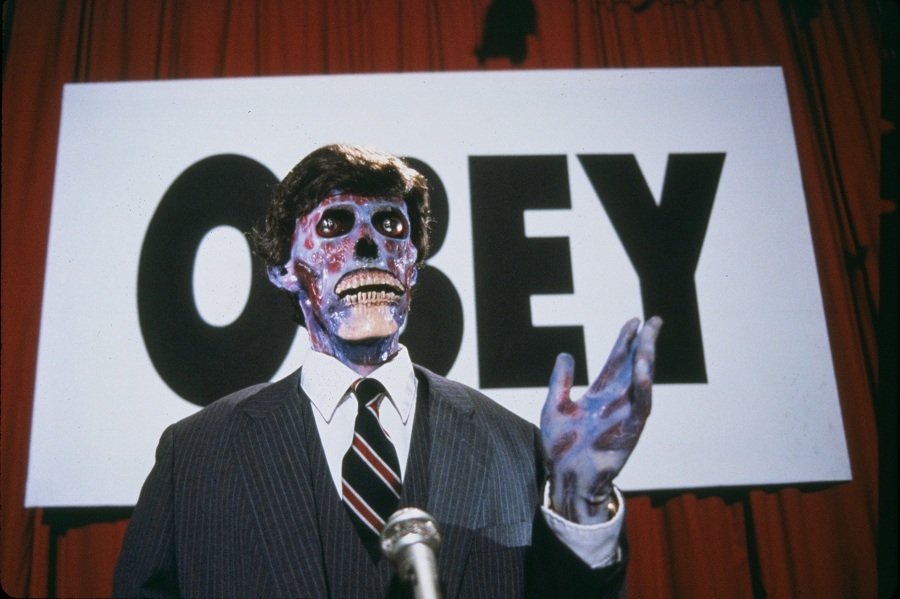 o makes some smart casting choices. Pro wrestler Piper was an inspired choice for said hero and he's amazingly good in the role, delivering the action with confidence but also bringing wit and the occasional surprising bit of vulnerability that give personality to his pulp archetype. He's mirrored nicely by Keith David, who is able to match Piper in both wit and brawn and thus functions as an effective, more cynical counterpoint. Elsewhere, Meg Foster uses her icy blue eyes and cool demeanor to add presence to a small but important role and the supporting cast is fleshed out with welcome character actor faves like Raymond St. Jacques, Peter Jason and George "Buck" Flower.It should also be noted that Carpenter isn't afraid to add humor to the action, most notably in a famous fistfight between Piper and David that goes on for an epic length. It's easy to revel in the excess of this scene but if you look bey
o makes some smart casting choices. Pro wrestler Piper was an inspired choice for said hero and he's amazingly good in the role, delivering the action with confidence but also bringing wit and the occasional surprising bit of vulnerability that give personality to his pulp archetype. He's mirrored nicely by Keith David, who is able to match Piper in both wit and brawn and thus functions as an effective, more cynical counterpoint. Elsewhere, Meg Foster uses her icy blue eyes and cool demeanor to add presence to a small but important role and the supporting cast is fleshed out with welcome character actor faves like Raymond St. Jacques, Peter Jason and George "Buck" Flower.It should also be noted that Carpenter isn't afraid to add humor to the action, most notably in a famous fistfight between Piper and David that goes on for an epic length. It's easy to revel in the excess of this scene but if you look bey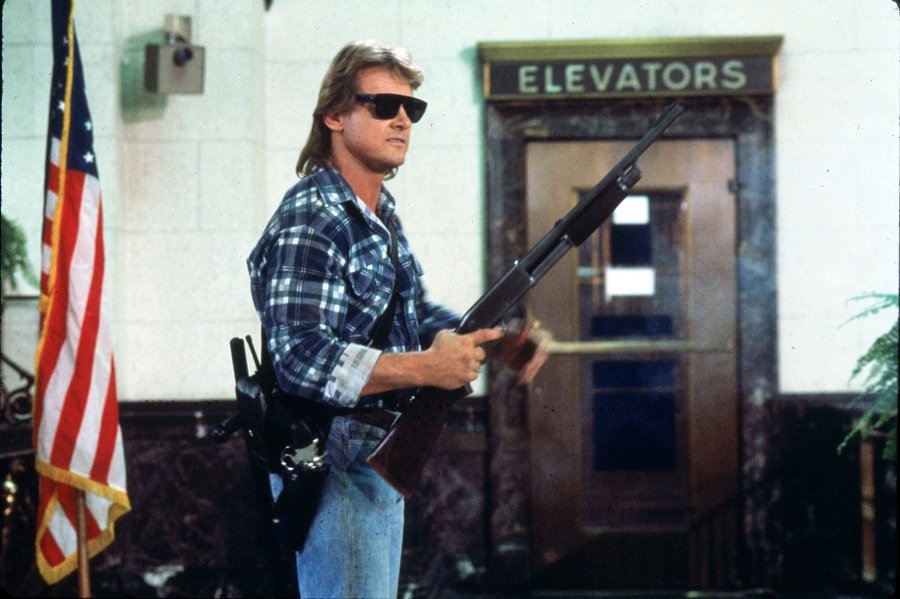 ond that it's a really masterful bit of tension-and-release filmmaking, with laughs offsetting the punches and kicks in a way that keeps the audience bracing themselves to see what will happen next. Another memorable example of humor comes in a bank lobby shootout, featuring a line from Piper about bubblegum and kicking ass that has become a legendary cult movie moment.That said, what really makes They Live stick with the viewer after all the bullets and beatings is its effectively conveyed message. Carpenter uses his storyline to offer his trenchant take on Reagan-era America, making the case that the "ruling class" has no interest in helping the people below them and would rather manipulate them into fighting amongst themselves so they can't wake up and see the overall picture of how those in power are working against them. Carpenter's use of pulpy sci-fi story hooks to deliver this message enhances the barbed wit - and the passage of time revealed he was definitely on target with
ond that it's a really masterful bit of tension-and-release filmmaking, with laughs offsetting the punches and kicks in a way that keeps the audience bracing themselves to see what will happen next. Another memorable example of humor comes in a bank lobby shootout, featuring a line from Piper about bubblegum and kicking ass that has become a legendary cult movie moment.That said, what really makes They Live stick with the viewer after all the bullets and beatings is its effectively conveyed message. Carpenter uses his storyline to offer his trenchant take on Reagan-era America, making the case that the "ruling class" has no interest in helping the people below them and would rather manipulate them into fighting amongst themselves so they can't wake up and see the overall picture of how those in power are working against them. Carpenter's use of pulpy sci-fi story hooks to deliver this message enhances the barbed wit - and the passage of time revealed he was definitely on target with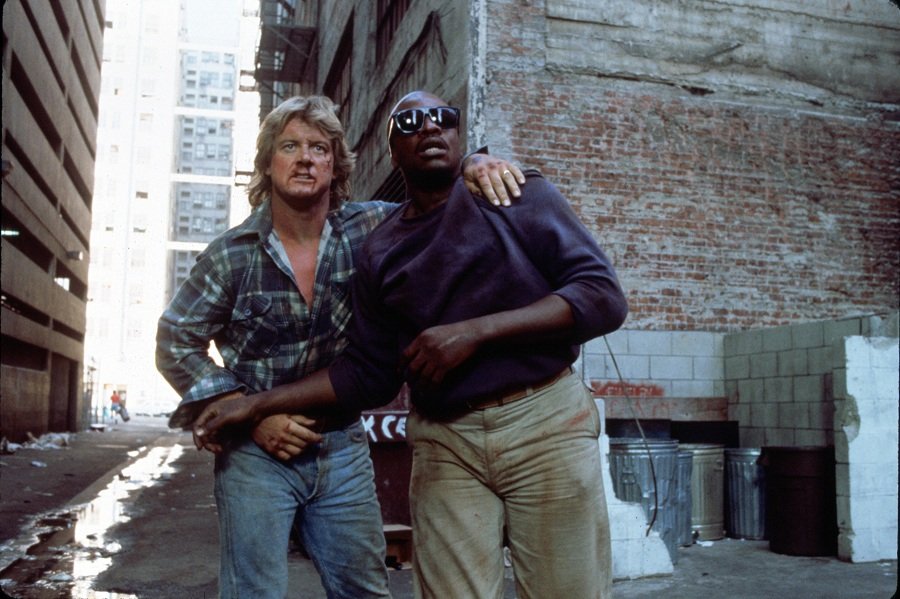 his view of how corporate interests have come to shape the direction of society in the U.S.In short, They Live is the kind of film that might be shrugged off by some as a b-movie but those viewers are missing out on one of the savviest, most subversive satires to hit American theaters during the '80s. John Carpenter was never braver as a filmmaker than he was here - and anyone who can tune in to its quirky, take-no-prisoners wavelength will be rewarded with one of his greatest cinematic achievements.
his view of how corporate interests have come to shape the direction of society in the U.S.In short, They Live is the kind of film that might be shrugged off by some as a b-movie but those viewers are missing out on one of the savviest, most subversive satires to hit American theaters during the '80s. John Carpenter was never braver as a filmmaker than he was here - and anyone who can tune in to its quirky, take-no-prisoners wavelength will be rewarded with one of his greatest cinematic achievements.


